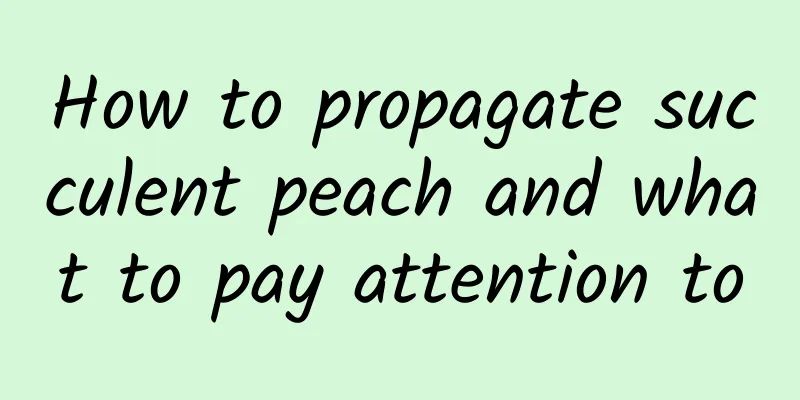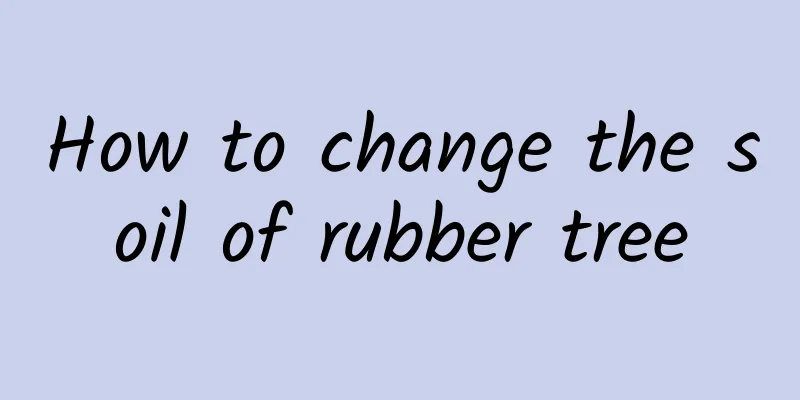What fertilizer should be used to make peaches big and sweet?

|
Peaches are a kind of fruit that many friends love to eat. Whether peaches can be sold at a good price is not only related to appearance, but the taste of peaches is also very important. Let’s take a look at what fertilizers can be used to make peaches big and sweet? What fertilizer should be used to make peaches big and sweet? Peach trees have high requirements for the three main fertilizers: nitrogen, phosphorus and potassium. Since peach trees have a well-developed root system, trenching should be used when fertilizing to promote the root system's absorption of nutrients. Peach trees have different fertilizer requirements at different growth stages. During the young tree stage, the amount of nitrogen fertilizer should be appropriately controlled, while the addition of phosphorus and potassium fertilizers should be increased to prevent excessive growth of the tree and affect the quality of the fruit. Peach trees have a high demand for potassium fertilizer throughout their entire growth cycle , especially during the fruit expansion period. At this time, timely supplementation of potassium fertilizer is crucial to promote fruit development. Top dressing is usually done 3 to 4 times for peach trees, which are arranged before flowering, after flowering, during the hard core period and during the fruit expansion period. The topdressing of peach trees is mainly foliar fertilization, combined with basal fertilizer application. When applying fertilizer on the leaves, you can use Colorist, dilute it with water at a ratio of 1:2000 to 1:3000, mix it with potassium dihydrogen phosphate, and supplement it with trace elements such as calcium, boron, and zinc. This method of fertilization helps promote fruit coloring, increase the sugar content of the fruit, and prevent flowers and fruits from falling, thereby increasing production and income. Fertilizer requirements of peach trees at different growth stages 1. Young tree stage At this stage, peach trees mainly need to promote root development and establish a good tree structure. Therefore, the amount of nitrogen fertilizer used should be properly controlled to avoid excessive growth. Phosphorus fertilizers help root development, while potash fertilizers help increase the tree's disease resistance and promote root health. 2. Growth period As peach trees enter the growing season, the need for nitrogen fertilizer increases to support the growth of new shoots and the formation of leaves. At the same time, phosphorus fertilizer helps flower bud differentiation, while potassium fertilizer helps improve the overall health and disease resistance of the tree. 3. Flowering period Before flowering, peach trees have an increased demand for phosphorus fertilizer to promote the opening of flowers and improve pollination success. In the later stage of flowering, appropriate amount of nitrogen fertilizer can help restore the vitality of the tree. 4. Hardcore stage The hard-core stage is a critical period when the fruit begins to form, and the demand for potassium fertilizer increases at this time because potassium fertilizer helps the formation of cell walls and the hardening of the fruit. 5. Fruit expansion period This is the period when peach trees have the greatest demand for potassium fertilizer, which is essential for promoting rapid expansion of the fruit and improving fruit quality. 6. Maturity During the fruit ripening period, the need for nitrogen fertilizer is reduced, while the application of potassium and phosphorus fertilizers can continue to support the final ripening of the fruit and improve fruit quality. 7. Dormant period During the dormant period, the growth activity of the peach tree slows down and the amount of fertilizer used is reduced accordingly. However, an appropriate amount of basal fertilizer (such as organic fertilizer ) can be applied during the dormant period to prepare for the next year's growth cycle. 8. Foliar fertilization In addition to soil fertilization, foliar fertilization is also an effective way to supplement nutrients, especially during fruit development, when the required trace elements and nutrients can be quickly supplemented through foliar fertilization. In summary, the key to improving the quality of peaches lies in strengthening the comprehensive nutritional management of peach trees. Ensuring that peach trees receive a balanced supply of nutrients is the basis for ensuring peach yield and quality.
|
<<: What fertilizer makes cabbage grow best?
>>: What is the best fertilizer for grapefruit trees?
Recommend
Causes and treatments for yellow rose leaves
1. Lack of iron 1. Reason: Flowers in greenhouses...
How to cultivate Fritillaria
1. Maintenance methods 1. Temperature: From its d...
The best time and method to plant garlic and which month is the best for sowing
Garlic planting time The time for planting garlic...
Cultivation methods and precautions of yellow horn orchid
1. Breeding methods 1. Pot soil selection If it i...
How to grow the silkworm
1. Sufficient sunlight During the growth stage, s...
The efficacy and function of hawthorn, what should not be eaten with hawthorn
1. The efficacy and function of hawthorn 1. Help ...
What soil is suitable for growing wolfberry?
Introduction to wolfberry Wolfberry is a plant of...
Why is Fire Festival not popular?
Why not popular The Fire Festival is mostly red-g...
How to prune Kalanchoe?
Kalanchoe are loved for their winter blooming qua...
Can I water my orange tree when it's blooming?
Watering the flowering orange tree Orange trees a...
How to grow hydroponic daffodils correctly and how long does it take to bloom
1. Correct method of raising 1. Water source sele...
How to prune the tanchun flower
1. Prune dead branches During the growth process,...
The efficacy and function of leek, the efficacy and function of leek seeds
1. Leek 1. Nourishing the kidney and strengthenin...
The newly bought baby's breath can be watered after a few days. How to raise the seedlings
1. Water after a few days If the newly bought bab...
What causes the leaves of the golden diamond to rot?
1. Excessive watering Reason: Diamondwood likes m...









